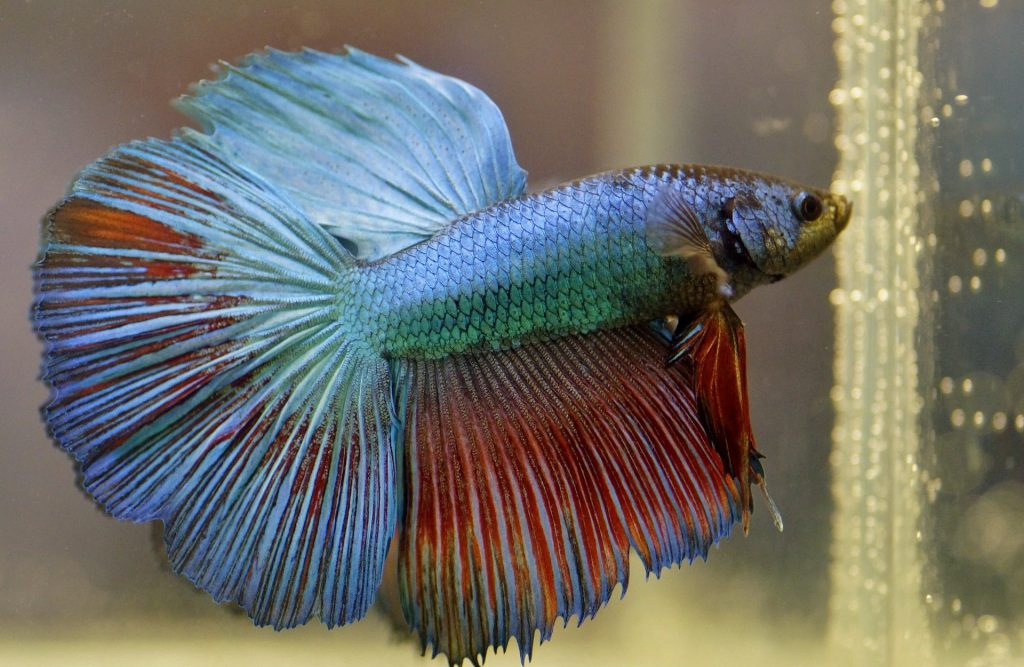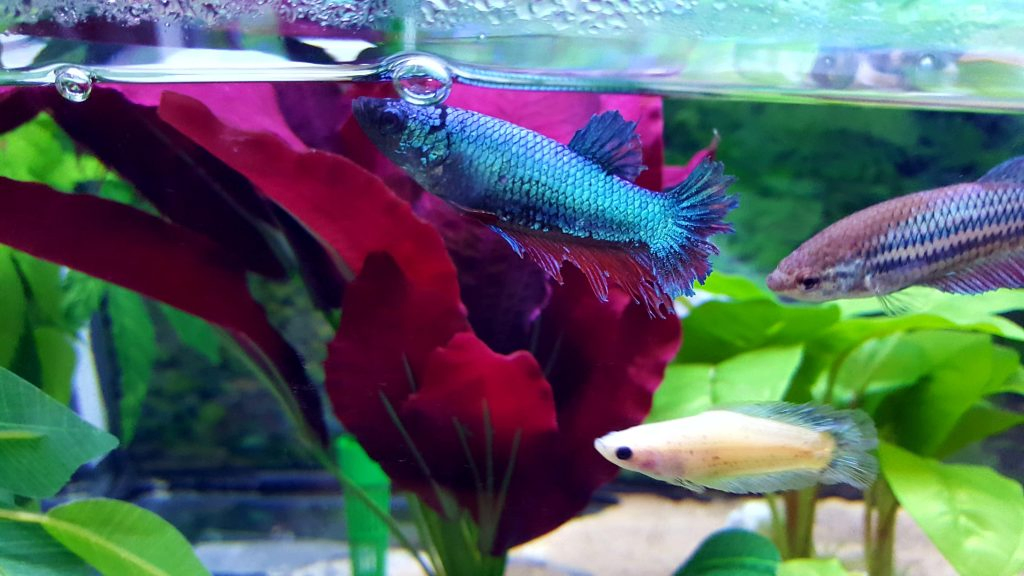Anyone who has had a betta fish before might have noticed a peculiar collection of bubbles at the top of their tank. This is no cause for alarm! These amazing constructions are actually their bubble nests. Their fascinating breeding behavior may surprise you.
Betta fish are known for a long list of interesting behaviors. While they are most recognizable due to their heightened levels of aggression, males actually make quite dedicated parents.
In many fish species, the males actually play a significant role in childrearing. Betta fish are no different as males must take care of eggs after the females lay them.
This process is nothing like the “traditional” nesting behavior you may expect, such as where birds lay on their eggs to keep them warm.
Rather, male bettas make these intricate structures in an attempt to keep the eggs safe and healthy until hatching.
Why do betta fish make bubble nests?

Bubble nests are where betta fish keep their eggs once they have been laid. Males spend their time building these extravagant nests until a female comes along.
When the female lays her eggs, the male betta will collect all of them one-by-one and carry them to the nest at the top of the water.
He will pop them in there to keep them floating on the surface of the water. Traditionally, he will make these from floating debris, but he won’t be too picky if that’s not available in an aquarium.
Do female betta fish make bubble nests?
Bubble nest construction is purely a male behavior. During their brief relationship, the only role a female betta plays in parenthood is egg-laying.
Once she has found a suitable mate to release her eggs too, she simply swims away. She has no role in raising the fish, nor will she refrain from turning her babies into a tasty snack later on if she feels like it.
What are the bubbles at the top of my betta fish tank?

If this is purely breeding behavior, you might ask yourself what bubbles are doing in your single betta’s tank.(Check SMK Blog)
If it is a girl, there is likely another reason. As females do not construct these nests, it may have something to do with a filter or bubbler.
You might have even mis-sexed your betta. While bettas notoriously have distinct sexual dimorphisms, it is possible to confuse them from time to time.
Males tend to have large, extravagant tails, whereas females tend to be slightly smaller with shorter fins.
If you happen to have a duller male, he can easily be mistaken for a female in the beginning.
Even in the absence of another female, male bettas will continue to make these nests every now and again. This doesn’t mean that they think they’re going to become fathers.
It’s just natural behavior for them. Generally, the nest construction comes before they meet another betta anyway. They have to be finished with this before the eggs are laid.
They like to be prepared in the event that a female comes along so they can swiftly engage in courtship and prepare the eggs.
What does a bubble nest look like?
Bubble nests look exactly as they sound. They are a collection of small bubbles at the top of the tank.
They are larger than foam, approximately the size of your betta fish’s eye. They can be comparable to small soap suds in the bathtub or even the fizz in a soda.
Why are the eggs kept in a bubble nest?

Bubble nests allow bettas to keep their eggs in a nice environment. Traditionally, the muddy, shallow waters of the betta’s home are quite messy.
They are filled with dirt and debris, not to mention lots of predators. Fish eggs make a tasty snack for many small animals which live in, or near, the water.
Additionally, these shallow ponds they call home are not known for being oxygen-rich. Low levels of oxygen can kill baby bettas before they get the chance to hatch.
This means that there is really only one good place to lay their eggs – at the surface. The surface has the highest levels of oxygen and it’s a safe distance from the bottom.
Unfortunately, eggs don’t naturally float. Even if they did, they probably wouldn’t stay together easily enough for the male to be able to guard them from hungry predators.
How often do betta fish build nests?
There is no set time which dictates when a male will make these nests. There are some bettas which will do this all the time, while others don’t ever bother.
There are many individual differences which indicate why this would happen. While these factors are beyond your control, there are environmental factors which you can influence.
How do I encourage the building of betta bubble nests?

There are some environments which are optimal for keeping a betta happy and dedicated to their bubble nest building.
These are especially important things to consider if you are interested in breeding fish. If they don’t build a nest, you can’t get them to breed.
Keep in mind that none of these things are necessarily required for nest building, but they can help motivate a shy betta male to start construction.
- Debris for cover: Sometimes, they need a little privacy for their nests.
You don’t want to give them the impression they are about to invest all this time building only to have to feed their babies in front of onlookers.
Try putting in some floating leaves or even just add a plant inside your tank.
- The right filter: They may have actually started trying to build their nests only to have a powerful filter destroy them.
If the current in your aquarium is too strong, their delicate nests will not stay together.
- Clean water: This doesn’t mean you should remove the filter completely. Clean water is key to keeping a happy and healthy betta.
A dirty tank may discourage your betta from building. Consider using a proper filter and adequate water changes.
- Warm environment: This is not the only water condition to keep in mind. Make sure the temperature is adequately warm, as this is also important to put them in the mood.
- A little friend: If you are at your wits’ end, consider getting them a little help.
The introduction of another female or male betta may encourage them to build a nest.
Remember, you should never mix male bettas, and you should be cautious about adding a female.
Try to push their tanks next to each other, or use a transparent divider to separate them.
Bubble nests are a fascinating part of betta fish breeding. Who would have known that the males of such an aggressive species would spend so much time making such delicate creations?
Do you have any tips or stories you’d like to share about betta breeding? Comment below!


